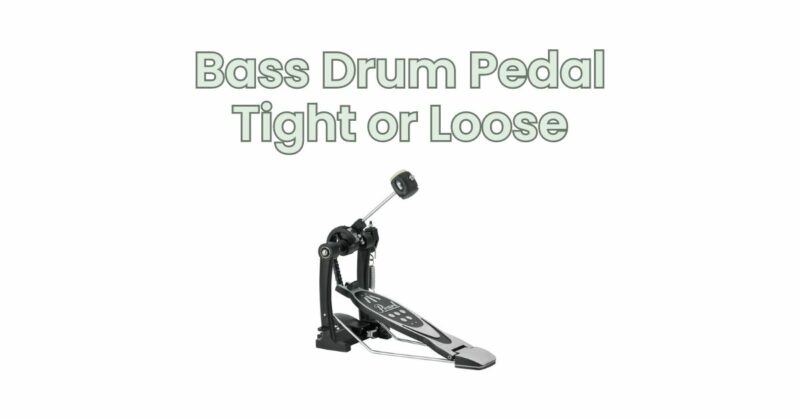The tension of a bass drum pedal plays a crucial role in determining the feel, response, and overall performance of your drumming. However, drummers often wonder whether it’s better to have a tight or loose pedal tension. In this article, we will explore the effects of pedal tension on playability and sound, helping you understand the pros and cons of each approach and find the right balance for your playing style.
Tight Pedal Tension:
- Control and Power: A tight pedal tension offers enhanced control and power. It allows for precise articulation and dynamics, making it easier to execute fast and accurate bass drum strokes. The increased resistance from the tight spring tension provides a solid and controlled feel, giving drummers a greater sense of authority and impact.
- Definition and Attack: With a tight pedal tension, the bass drum produces a defined and focused attack. The beater strikes the drumhead with more force, resulting in a pronounced initial punch and clear articulation of each note. This can be advantageous in situations where you want your bass drum strokes to cut through the mix and provide a strong rhythmic foundation.
- Consistency: Tight pedal tension promotes consistency in your playing. The higher resistance and control help maintain a steady and even stroke, allowing for consistent volume and timing. This is particularly beneficial for intricate bass drum patterns and fast double bass drumming, as it ensures each note is played with precision and clarity.
Loose Pedal Tension:
- Speed and Fluidity: A loose pedal tension enables greater speed and fluidity in your bass drum strokes. With less resistance, the beater rebounds more quickly, allowing for rapid pedal motion and faster repetitive strokes. This can be advantageous for genres like jazz, fusion, or certain styles of metal that require intricate and fast bass drum work.
- Natural Feel and Relaxation: A loose pedal tension offers a more natural feel and encourages a relaxed playing technique. With less resistance, you can allow the weight of your leg to do most of the work, minimizing unnecessary tension and fatigue. This can lead to increased endurance and a more effortless playing experience, particularly during long performances or extended drumming sessions.
- Increased Resonance and Depth: A loose pedal tension allows the bass drum to resonate more freely, resulting in increased depth and sustain. The beater bounces off the drumhead, allowing it to vibrate and produce a fuller sound. This can be advantageous in situations where you want a rich, boomy, and resonant bass drum tone.
Finding the Right Balance:
- Personal Preference: Ultimately, the decision between a tight or loose pedal tension comes down to personal preference and the musical context in which you are playing. Experiment with different tensions to determine which feels most comfortable and suits your playing style.
- Adaptability: Consider the versatility of your playing and the genres/styles you frequently perform. You may choose to adjust the tension based on the specific requirements of each musical situation. For example, you might prefer a tighter tension for heavy rock or metal and a looser tension for jazz or funk.
- Regular Assessment: Regularly assess your pedal tension to ensure it still meets your needs. As you grow as a drummer and your playing style evolves, you may find that your preferences change. Regularly reevaluate and make adjustments accordingly.
The tension of your bass drum pedal is a personal choice that depends on your playing style, musical preferences, and desired sound. A tight pedal tension offers control, power, and definition, while a loose tension provides speed, fluidity, and a more relaxed feel. Experiment with different tensions to find the right balance that suits your needs, and don’t hesitate to make adjustments as your playing evolves. Remember, the goal is to achieve a tension that allows you to play comfortably, expressively, and in a way that enhances your overall drumming experience.


